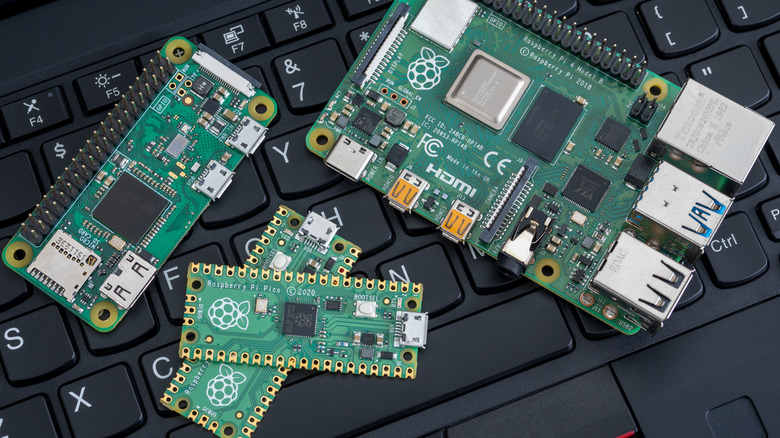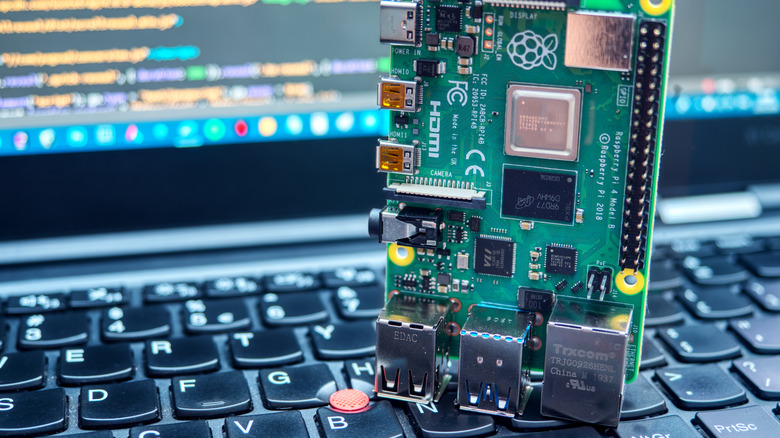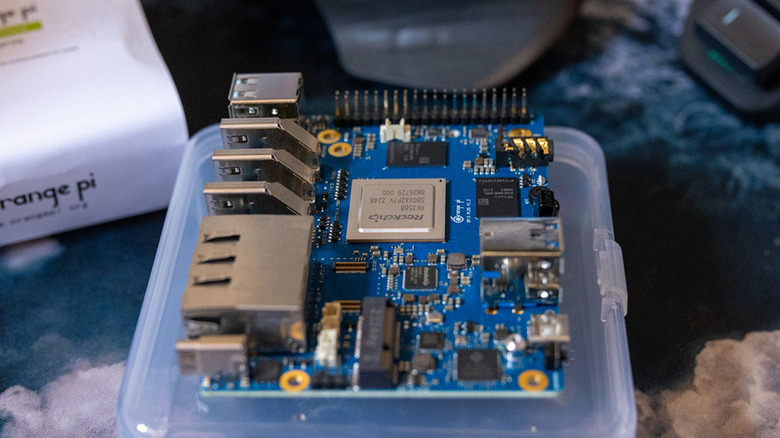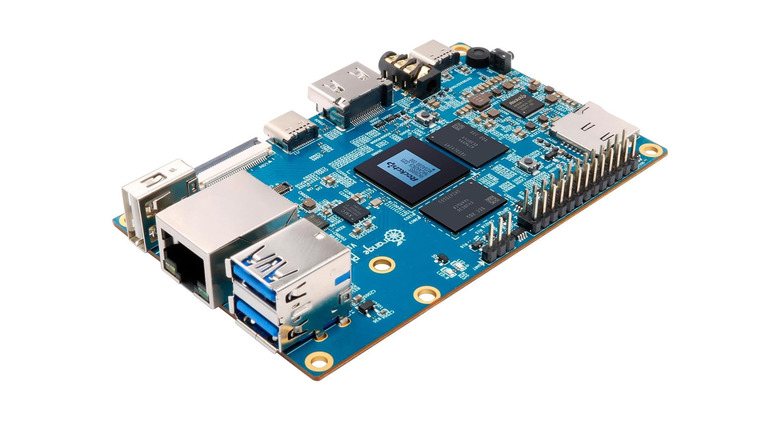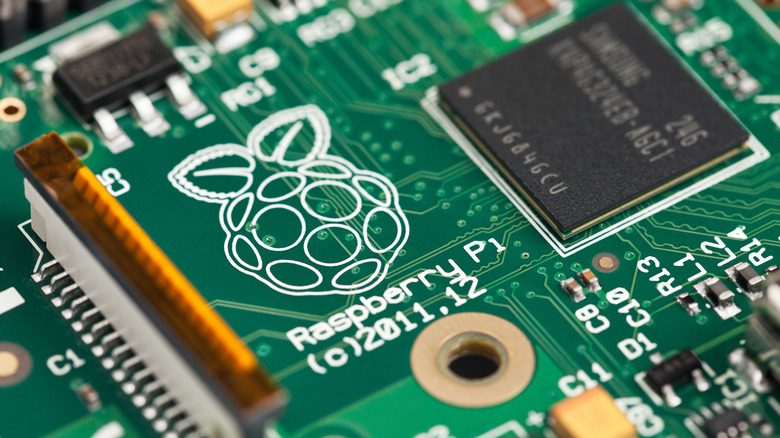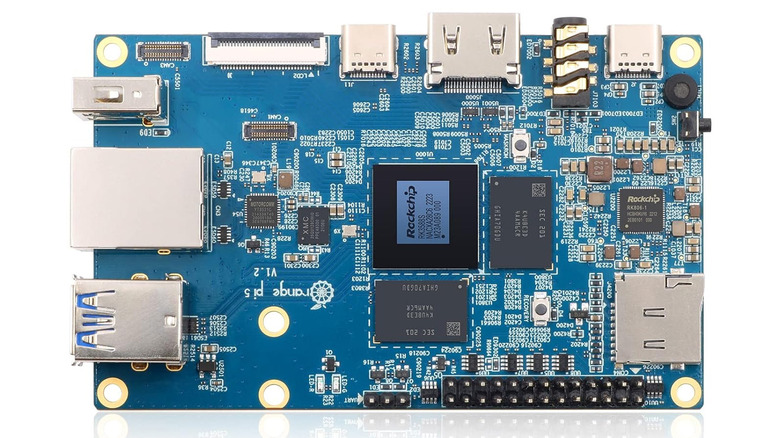Raspberry Pi 5 Vs Orange Pi 5: Which Is Better For Your Project?
For many beginner DIYers looking to make some simple projects, a Raspberry Pi is an excellent choice. This little device allows you to do things like create retro gaming machines, home servers, and so much more. What you might not know is there is a very solid competitor on the market with the Orange Pi. At their core, both devices will accomplish the same tasks, and depending on the project you're taking on, you might not even notice much of a difference.
The Orange Pi 5 and Raspberry Pi 5 have enough differences between the two that it pays off to do some research to find out what's more worth your money. There are a few factors that come into play, including price, availability, and troubleshooting. The price difference isn't the steepest, but if you're able to save a good chunk of cash to accomplish the same goal, it's worth doing. Ultimately, it's going to come down to personal preference, but it doesn't hurt to be informed.
What is Raspberry Pi?
A Raspberry Pi is a little device that people can use to do just about anything. If you buy one, you'll be sent a tiny motherboard that can be used to create whatever you want — including something that helps you make the perfect steak. It does require you to have some technical know-how, but there are plenty of tutorials available to help you get started on a project.
The Pi gives you the ability to write code directly to the device, which gives it quite a bit of versatility if you are familiar with the Linux operating system. This does mean you'll need to get a monitor and keyboard, too, so don't expect everything to come bundled with the purchase.
The Raspberry Pi 5 specifically is more than two times faster than the generation before it, and the manufacturer says the in-house silicon used in the build gives the best performance we've seen out of a Raspberry Pi so far. If you're shopping for one, you should try to splurge for the latest one if you can.
What is Orange Pi?
The Raspberry Pi finds itself compared to the Arduino often when it comes to beginner tinkerers, but those aren't the only options available. The Orange Pi works a lot like the Raspberry Pi, and many users might not even notice the differences at first. The Orange Pi can do just about everything the Raspberry can, but it doesn't run on the popular Linux-based Raspbian operating system. Instead, the Orange Pi runs on its own Orange Pi OS, but it can use the Android OS, too.
To simplify it, if you know what a Raspberry Pi is, you essentially know what an Orange Pi is. They are both open-source, but the Orange Pi has different specs, can run Android, and can handle a lot of tasks better thanks to beefier hardware. For the casual DIYer, the Orange Pi might be overkill, but there are spots where it comes in handy over its Raspberry competitor. The Orange Pi 5 may be the latest iteration, but there are plenty to choose from, including the Orange Pi Zero, a smaller device that'll let you explore the ecosystem without much investment.
What's the difference between Orange Pi and Raspberry Pi?
Technically speaking, the Orange Pi 5 comes out ahead of the Raspberry Pi 5 in terms of performance. The Raspberry Pi sports a serviceable four-core processor, which is enough for many things, but the Orange Pi bumps it up to an eight-core processor. Simply put, having more cores is beneficial for multitasking, but it does come down to what type of project you're working on. You'd very likely be able to get better performance out of something CPU-intensive like gaming with the Orange Pi, but both can get the job done.
Outside of that, the two devices share a lot of similarities. The Raspberry Pi is usually the cheaper of the two — $80 for the Raspberry compared to $126 for the Orange at the time of this writing. If money is a factor, the Raspberry Pi will come out ahead for a lot of people, even if the Orange offers better performance. The Orange has some factors that help it stand out even more over its Raspberry competitor. The Orange supports up to 32 GB of RAM compared to just eight for the Raspberry, and it can utilize NVMe solid-state drives where the Raspberry can't. The Raspberry Pi is also limited to a Linux-based operating system, while the Orange can run Android.
Is Orange the clear favorite over Raspberry?
While the Orange does have more versatility and power, there's one clear thing holding it back from completely surpassing the Raspberry Pi: the community. The Raspberry Pi is more mainstream than the Orange, and that's something some users point out as a positive, as it allows you to troubleshoot with other people far more easily. You should have no problems finding all sorts of tutorials if you're a beginner. If you're familiar with the Raspbian OS from previous Raspberry Pi devices, it helps to stay in the same ecosystem versus having to learn a new one with the Orange.
For new owners who haven't used anything of the sort before, it's a bit murkier. If budget isn't a concern, the Orange does seem like a better pick, but that's only if you need the extra horsepower it offers. A simple home server is just fine for the Raspberry, for example, even if it would perform better with the Orange thanks to the NVMe SSD support.
It comes down to personal preference
Performance-wise, the clear favorite here is the Orange, and if that's all you're looking for, then your choice is made. However, pricing and easily accessible tutorials could ultimately point you in the direction of the Raspberry Pi. If you're okay with a lot of trial and error with a smaller support community, the Orange is a winner there, too.
It's hard to go wrong with either one, and both devices can do anything a DIYer would be hoping to accomplish. Seasoned tech junkies will see a lot of appeal with the Orange, while those just dabbling in the field will get by just fine with the Raspberry Pi. The bright side of all this is nothing is stopping you from buying both of them down the road if you want to keep on tinkering. A good rule of thumb is figuring out what kind of power you'll need for your project beforehand and then making your purchase from there.
